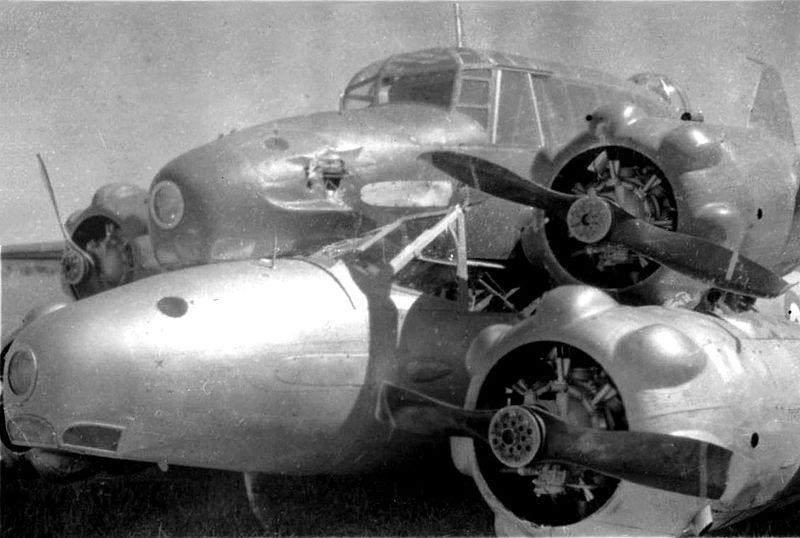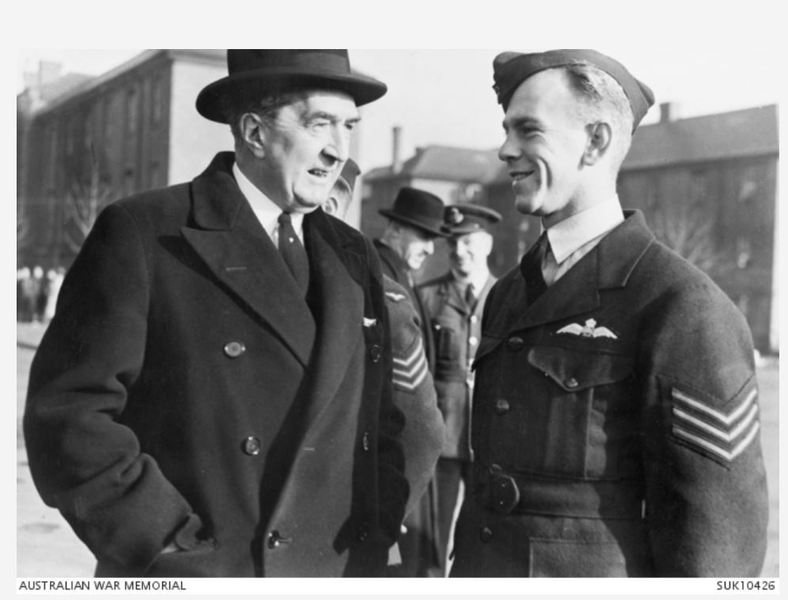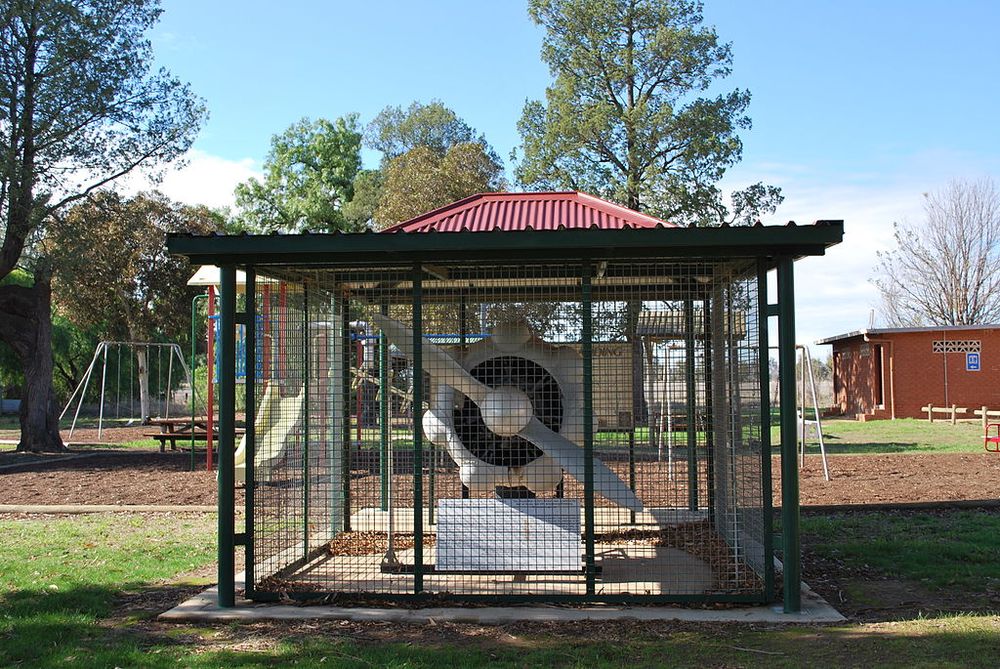In New South Wales, Australia, about 120 km south of Wagga Wagga, lies a small community of farmers and cattle rearers called Brocklesby. The village was once an important station on the Culcairn-Corowa railway line, whose main purpose was to haul wheat from the region to the ports for export. Then the railway closed, and now all that remains in Brocklesby are the grain silos, the defunct railway tracks and a couple of scattered houses. It is said that the only exciting thing that ever happened here, or rather, the sky above, was a mid-air collision.

The strangest mid-air collision ever. The two Avro Ansons crashed and got entangled together.
The aviation mishap that put Brocklesby permanently on the map occurred on 29 September 1940. Back then, the Royal Australian Air Force operated a Flying Training School at Forest Hill near Wagga Wagga. The school was created as part of the massive British Commonwealth Air Training Plan (BCATP), also known as the Empire Air Training Scheme (EATS)—a joint military aircrew training program established by the United Kingdom, Canada, Australia and New Zealand to train and produce pilots for the war. BCATP was responsible for training nearly half of all the pilots, navigators, bomb aimers, air gunners, wireless operators and flight engineers who served the war from the participating countries. To this day, the BCATP remains one of the single largest aviation training programs in history.
Forest Hill was a new air base, and roads and buildings were still under construction when its first course of flying training commenced in the summer of 1940 with the British-manufactured twin-engined Avro Ansons. On 29 September 1940, two Avro Ansons took off from Forest Hill for a cross-country training exercise over southern New South Wales. Tail number N4876 was piloted by Leonard Graham Fuller, a young man of 22 from Cootamundra, a small town less than 100 km away from base, with Ian Menzies Sinclair as his navigator. The pilot of tail number L9162, Jack Inglis Hewson, was younger still at 19. His navigator was Hugh Gavin Fraser. Their planned route was expected to take them first to Corowa, then to Narrandera, then back to Forest Hill.

An Avro Anson in flight during the Classic Fighters Airshow in 2015. Photo: Oren Rozen/Wikimedia Commons
The Ansons were over the town of Brocklesby, flying low at an altitude of 1,000 feet, when they made a banking turn. Hewson's aircraft was behind Fuller’s, and as they made the turn, Hewson went out of sight and beneath Fuller. Moments later, the two Ansons smashed together. The propellers of Fuller’s aircraft tore into the engine cowlings of Hewson’s, and both engines of Fuller’s airplane were knocked off. The engine of Hewson’s aircraft continued to run, but with the deadweight of Fuller’s airplane on top, Hewson was unable to pull away. Both Ansons thus became interlocked, one on top of the other.
The crew couldn’t bail out just yet because that would crash the airplanes over Brocklesby. Somehow they would have to fly this freak combination out into the fields and away from the houses. At this point, you might expect that Hewson with a running engine had the best chance, but he was wounded when the spinning blades of the other aircraft sliced through his fuselage. By some miracle, Fuller discovered that he was able to control the pair with the ailerons and flaps on his airplane. Realizing he had a chance, Fuller ordered the others to jump. He then flew both airplanes using the engine of the bottom airplane for thrust and the controls of the top airplane to keep both airplanes steady. Fuller flew towards the base, but the planes became harder and harder to handle as the engine of the bottom plane began to lose power. After flying for some 8 km, Fuller ran the planes aground on a large empty field. The locked aircrafts slid 180 meters across the grass before coming to rest. According to Fuller, it was the best landing he ever made.

The extraordinary feat made headlines across the world, and cast a spotlight on the small town of Brocklesby. Fuller was praised for his decision to not bail out and attempt a landing, which avoided possible damage to Brocklesby as well as the airplanes themselves. Both Ansons were repaired and returned to flight service. Fuller earned a promotion. Unfortunately, he talked too much to the newspapers without permission. His superiors confined him to the barracks for fourteen days as punishment and also docked seven days' pay for this offense.

Stanley Bruce (left), the High Commissioner for Australia in London, talking with Sergeant Leonard Graham Fuller. Photo: AWM Photo Collection
When he graduated the next month, Fuller received a commendation from the Australian Air Board for his “presence of mind, courage and determination in landing the locked Ansons without serious damage to the aircraft under difficult conditions”. Fuller saw active service first in the Middle East, and then in Europe. He earned the Distinguished Flying Medal for sinking enemy shipping in Palermo Harbour. In 1942, Fuller was posted back to Australia as a flying officer, and became an instructor at No. 1 Operational Training Unit in Sale, Victoria. While riding a bicycle on the streets of Sale on 18 March 1944, he was hit by a bus and was killed.
There are two memorials to the crash at Brocklesby today—a historic marker at the landing site, installed in 1990 on the occasion of the 50th anniversary of the crash, and an Avro Anson engine, bought from a collector, and inaugurated in 2007 during Brocklesby's Australia Day celebrations.

The memorial at Brocklesby commemorating the successful crash landing in 1940 after the mid-air collision. Photo: Peter F Williams/Twitter

The Avro Anson propeller at Brocklesby. Photo: Mattinbgn/Wikimedia Commons



One of the more unusual aircraft incidents of WW2.
ReplyDelete